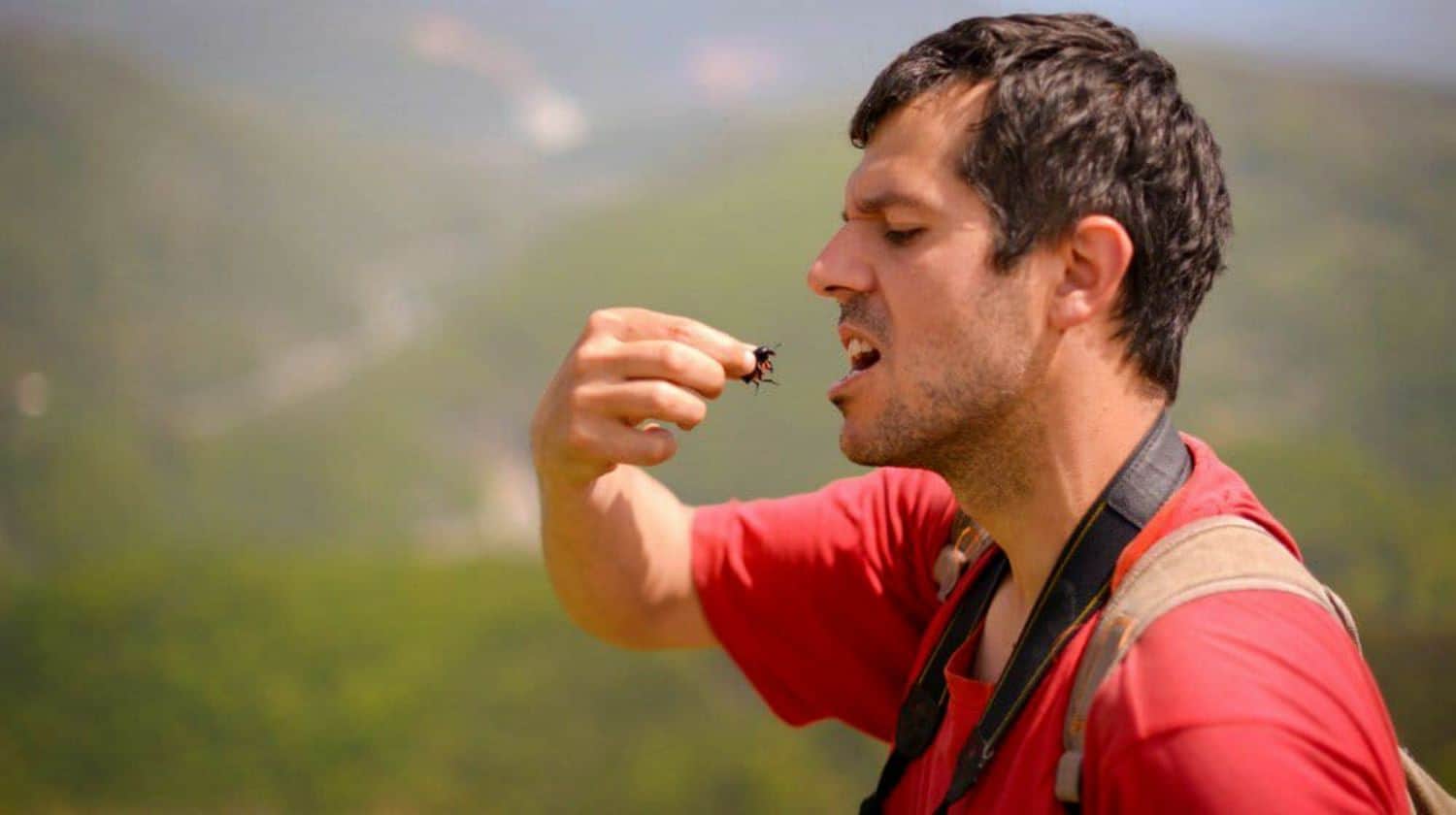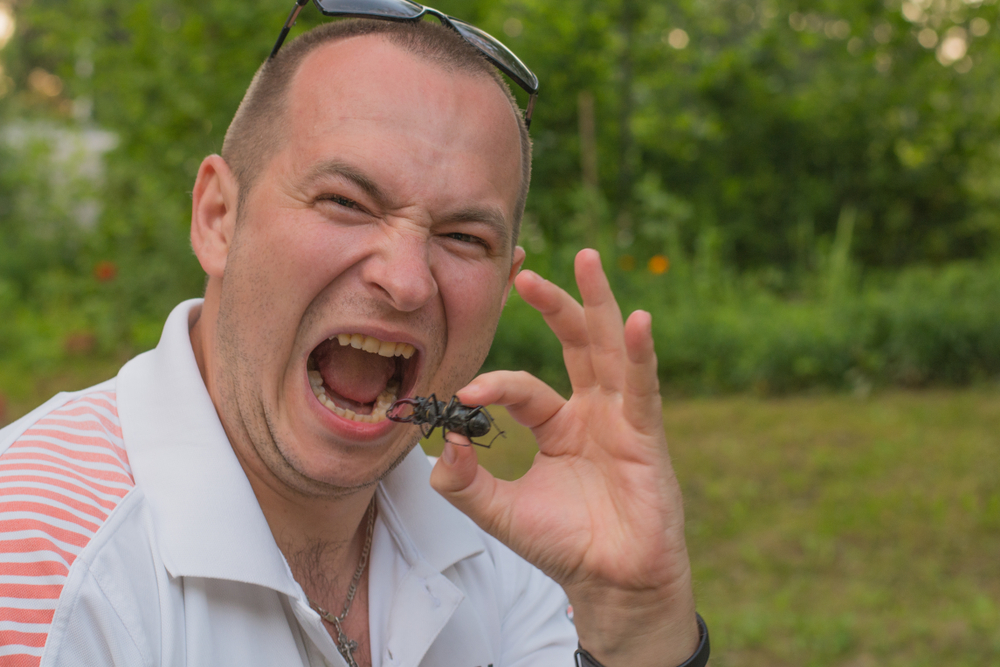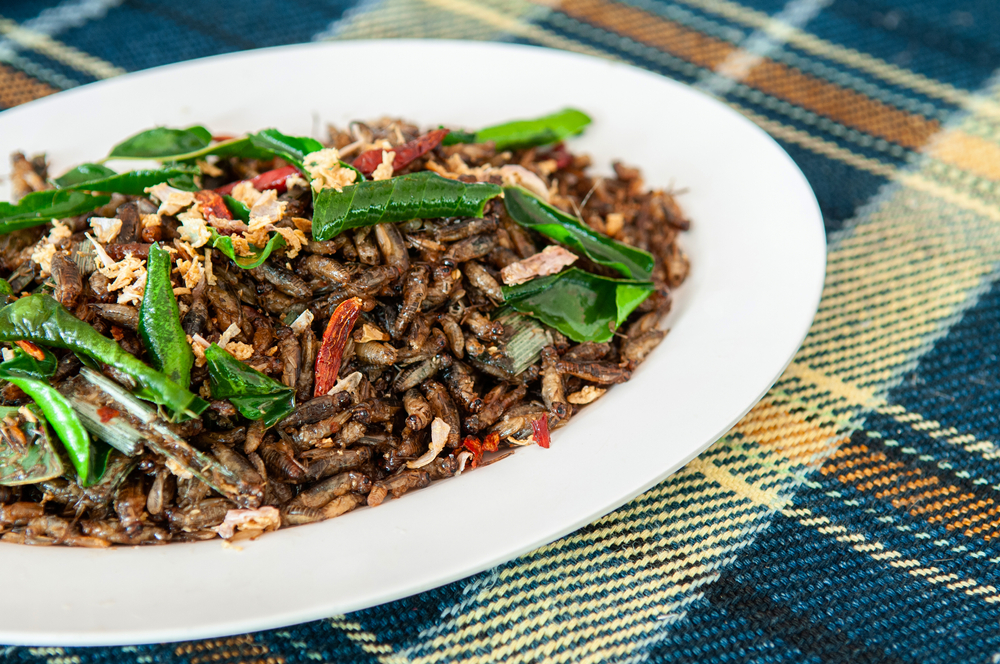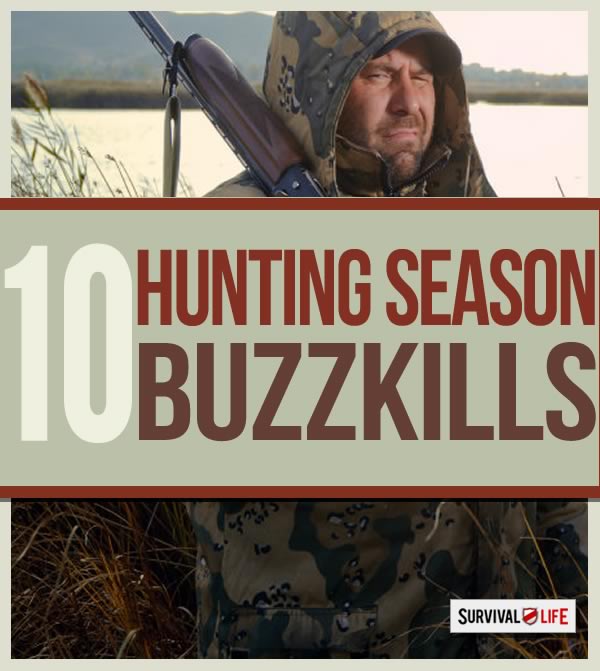Do It Yourself
Survival Foods: Eating Bugs, Insects, and Related Recipes

How do you feel about eating bugs and insects? When your life depends on it, you will not have a choice. Perhaps, you can make it a better experience with the recipes we have here.
Eating Bugs and Insects for Survival Isn’t So Bad
If you find yourself stuck in the wilderness, you must stop and assess the situation. Your goal should be to prioritize your daylight hours as it is difficult to do anything but rest after dark.
Your four pillars of survival are water, food, fire, and shelter. These are the resources you will need to survive any amount of time in the wilderness.
However, even within these pillars, you should prioritize your activities. The rule of threes states that you can survive three weeks without food, three days without water, and three hours without warmth from fire or shelter.
Despite the fact that you can survive several weeks without food, the symptoms of starvation will affect your productivity long before that point. Most survival shows and websites put a huge emphasis on finding food.
Some of this is just to make the show more entertaining. If a guy is hunting wild boar with a sharp stick, it is more fun to watch than some of the other survival tasks.
Part of that focus is for a very real purpose. As you go several days without food, your body will literally start to eat itself. It starts with burning fat reserves.
At this point, you will feel weak, achy, and a bit clumsy with a steady headache. As this process continues, your body will move on to burning muscle mass and organ tissue. This is when confusion, memory loss, nausea, lightheadedness, and severe depression can begin.
These symptoms can make it difficult to get up and collect firewood or water. They also make you more prone to injury or getting lost. The point is that food is important.
Food Options
Your priority when going after food in the wilderness should be fats and protein. These are the nutrients you need to avoid the symptoms of starvation.
As mentioned above, you see a lot of hunting on survival shows. Primitive hunting burns a huge amount of energy and has a low chance of success. Unless you just happen to have a rifle or shotgun with you, hunting is not a great way to spend your time.
Trapping allows you to set up a trap line and then just check it once or twice a day. This leaves the rest of the day for other activities. However, being successful with primitive trapping takes years of practice.
If you decide to trap you should have a secondary way to get food. Fishing has a higher rate of success, but without modern equipment, it becomes much more difficult. It can also be time-consuming.
Gathering is by far your best odds of getting a meal. If you know what you are looking for, you can take a walk to collect supplies and also come back with edible plants or insects.
While there are dozens of different edible plants in most environments, they rarely have the calories, fat, or protein you need to survive. Insects can be the best option to get those key nutrients without a great deal of time or effort.
Getting Used to Eating Bugs

It may not sound appetizing munching on beetles or ants, but insects are packed with nutrients. There are about 30 million species of insects that we know about, and about 1,900 of those are safe to eat. You can find these edible insects just about anywhere except for Antarctica.
While we find eating bugs strange, it is very normal in most of the world. There are plenty of cultures in which insects are a primary food source. It is also becoming more mainstream in the Western world. There are now companies that raise insects specifically for food purposes.
Several years ago, a business contact was telling me about how they were raising crickets to produce cricket meals. This was then used to make faux beef and faux chicken for people that wanted a healthier option. He said the company had just landed a contract with a major food manufacturer in the US, so the idea is obviously catching on.
A couple of years ago, I completed my first wilderness survival challenge with children. My two nephews were 10 and 11 at the time and wanted to see what crazy uncle Ryan does in the woods.
My plan was to give them exposure to several different food sources. We hiked out to find a camp, built an A-frame shelter with only natural materials, and collected firewood.
It was time to focus on food. I threw out a gill net to try and catch some fish. We set a squirrel pole to try and catch some squirrels.
I had brought pemmican and hardtack, so they could try some preserved survival foods. I pulled two small fish from the net and we cooked them up.
They found a small turtle, and we put that on the fire. Then we started looking around for other options.
It was time to do some gathering. I found some dandelions and clovers for us to eat. Then I stumbled on a bunch of ants and ant eggs. I popped a couple in my mouth and laughed. They seemed grossed out, but I told them that large black ants taste like sweet and sour candy.
They both tried the ants and agreed with me. Now every time we hang out, they end up eating an ant at some point to gross out their sister.
General Rules for Insects
If you start going out to try eating some insects, there are some rules to keep you from getting sick. You should always be able to positively identify the insect if you want to be sure it is safe.
Get familiar with insects in your area, but these rules can apply to insects anywhere in the world.
- Slow Moving Bugs – If you see something moving very slowly in the wild, it is often because it is poisonous. Predators know this and leave them alone. Be cautious of this.
- Fuzzy Insects – Most of the time fuzzy insects or those with spines use these features to distribute toxins. These features tell predators to stay away.
- Smelly Bugs – Your sense of smell helps prevent you from getting sick. Both bacteria and toxins carried by insects can smell bad. You are best to avoid eating anything in the wild with a foul smell including insects.
- Bright Colors – If an insect has markings that are red, yellow, orange, or blue it is a warning to predators. Often, these insects are toxic, so you are best to go with insects that are black, brown, or green.
- Stingers – You may think that bees and wasps with stingers are not edible. That is partially true. To eat these insects, you should remove the stingers. They should then be safe to eat.
- Flies and Mosquitoes – Bugs that breed or hang around feces, rotting meat, or stagnant water are dangerous. They often carry diseases that can make you sick or even kill you.
- Underground Insects – Anything you find underground such as worms or grubs will often have a good amount of dirt in their digestive system. You are best to soak these in water overnight to draw out the dirt before you eat them.
- Wings and Legs – There is little nutritional value in the wings and legs of insects, and they can scratch you up as you try to swallow them. You are best to remove legs and wings.
- When in Doubt, Cook It – If you want to be sure to kill bacteria and parasites that could be found in bugs, cooking it is the best bet. Common insects like grasshoppers are edible but often carry parasites that need to be killed.
Specific Bugs to Eat
You will find certain insects are common in most of the moderate climates in the world. Here are some edible species found just about everywhere:
- Ants – Ants are found all over the world and are all edible. You can break open an anthill, shove a stick into a hill, or eat them off of the ground. Some of them taste of citrus.
- Earthworms and Grubs – These are both edible and high in protein and iron. Just try to soak them before eating to draw out the dirt.
- Bees and Wasps – As stated above, these are both edible as long as you remove the stinger. Lots of cultures like to roast adult bees and eat the larvae raw.
- June Bugs – These are some of the larger insects found in the wild, and you can eat both the adults and the larvae.
- Moths and Butterflies – These can be eaten safely along with caterpillars. Just be sure to follow the general rules stated above for the caterpillars.
- Centipedes – These critters are poisonous when alive and can get to be very large. You should always cook them to eliminate any toxins as well as remove the head. Just be sure you know the difference between centipedes and millipedes as millipedes are poisonous.
- Mealworms – These are popular worldwide as a food source. I actually saw them roasted and sold at a roadside stand on the West Coast. The BBQ ones were pretty good.
- Cicadas – You probably know that cicadas are on a certain reproductive cycle and only come out every few years. When they are around, they are a good food source. The young ones are best as they aren’t quite so crunchy.
- Pill Bugs – You might know them as Roly Polys. They are actually related to shrimp and great as a food source.
- Roaches – You might think that roaches would be a bad choice, but they are fine to eat in the wilderness. As long as they are not living in garbage, they are fine to eat.
- Crickets – These are another popular food sources around the world, and many people raise them for food in cricket farms.
- Scorpions – These can be deadly if you get stung, so be careful catching them. Once you remove the stinger, they are fine to eat.
- Grasshopper – This insect is common in most of the world and can grow very large. Just remove the head and cook them to avoid parasites.
- Slugs – These slimy creatures carry parasites and also sometimes eat poisonous plants. They need to be gutted and cooked before eating.
- Tarantula – These giant spiders are one of the few spider species that make a good food source. They have large enough legs that they are good to eat. Just be sure to cook the whole thing well before eating.
- Snails – Just like slugs these need to be gutted and cooked. You will find them on French menus as escargot. I have eaten them several times, and they are quite good.
- Termites – This is another insect that is commonly eaten around the world. They are high in protein and can be collected by the hundreds. They tend to taste a bit like almonds.
Insect Recipes

Insects are commonly eaten in Southeast Asia and are most often seen as snacks or street food. Typically, they are just fried or roasted and rolled in sugar or spices.
You can also add them to stir-fries or curries for a source of protein. When deciding how to cook your insects, remember adults are crunchier and young insects are softer.
1. Red Ant Curry
This is a popular dish in Thailand and is quite simple to prepare.
- Just mix shallots, garlic, Thai chilis, black peppercorns, and shrimp paste. Mash it together with a mortar and pestle to make a paste. You can use a food processor if needed.
- Add this to a pot of boiling water. Then add green vegetables like broccoli, cabbage, brussel sprouts, spinach, or lemongrass.
- Next, add red ant larvae into the water. Cook for just a few minutes and you are ready to eat.
The broth will be spicy and briny with a bit of acid from the ant larvae. It can be a thin soup or can be more like a thick stew depending on your preference.
2. Taiwanese Cricket Stir-Fry
A good stir-fry has a variety of textures with one being crunchy. This is why often people add friend noodles or peanuts. Crickets are used in Taiwan for this crunch.
- Heat oil on high in a wok and add crickets, Thai chilis, garlic, and Thai basil.
- Cook it until the garlic is slightly brown and the chilis are cooked.
- Add in some shoestring potatoes for just a few tosses.
- Serve it with Sriracha on the side.
The crickets absorb the flavors of the basil, chilis, and garlic but add just a bit of shrimp flavor.
Eating Bugs Can Save Your Life
When you are trying out insects at home, it is fun to play around with different recipes to make them tasty. However, in a survival scenario, they are just going to provide nutrients to keep you alive and productive. You will most often either eat them raw or roast them over the fire.
My suggestion is to get out and try eating bugs and insects with your family in advance. You want everyone to be comfortable and to know that they are safe to eat. This will ensure that everyone helps with collecting insects in a real survival situation.
Have you ever tried eating bugs or insects before? Share with us the bugs that you think aren’t that bad in the comments section!
Up Next:
-

 Do It Yourself7 months ago
Do It Yourself7 months agoParacord Projects | 36 Cool Paracord Ideas For Your Paracord Survival Projects
-

 Do It Yourself9 months ago
Do It Yourself9 months agoHow To Make Paracord Survival Bracelets | DIY Survival Prepping
-

 Do It Yourself9 months ago
Do It Yourself9 months ago21 Home Remedies For Toothache Pain Relief
-

 Do It Yourself10 months ago
Do It Yourself10 months agoSurvival DIY: How To Melt Aluminum Cans For Casting
-

 Exports8 months ago
Exports8 months agoAre Switchblades Legal? Knife Laws By State








Pingback: Ultimate Backpacking Checklist for Beginners | Survival Go Bag
Pingback: 20 Edible Wild Plants You Can Forage For Survival | Survival Go Bag
Pingback: Instant Mashed Potatoes: Awesome Survival Food? - Cooking in Quarantine
Buckeye Larry
April 23, 2021 at 8:16 AM
Great post – helped distinguish priorities for both survival and relating that structure to the types of food generating activities. Would love to see a more in depth area specific for parts of the US, in the future.
Pingback: Ultimate Backpacking Checklist for Beginners - Get OutMore!
Pingback: What To Bring To A Picnic | Picnic Essentials Checklist – Sprent Brass
Pingback: What To Bring To A Picnic | Picnic Essentials Checklist – Bulletproof Survivors
Pingback: 5 Important Hiking Safety Tips For Active Seniors | Best Go Bag
Pingback: 5 “Knife Fighting” Myths (That Need To Die) [PODCAST] – Sprent Brass
Pingback: By: What To Bring To A Picnic | Picnic Essentials Checklist – Sprent Brass - Les Recettes Savoureuses